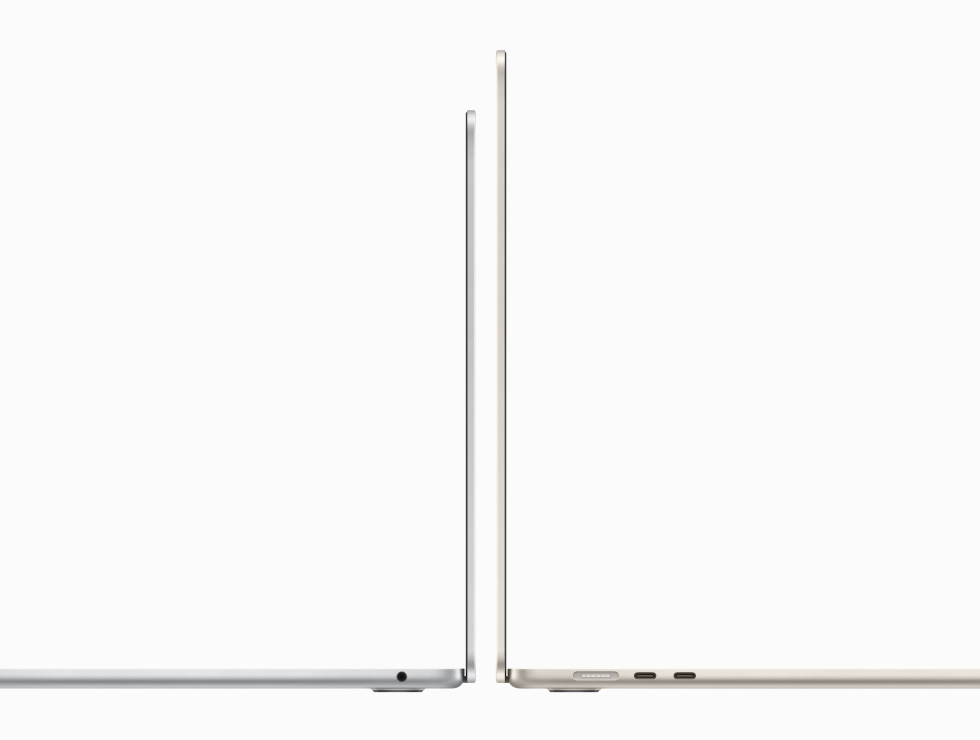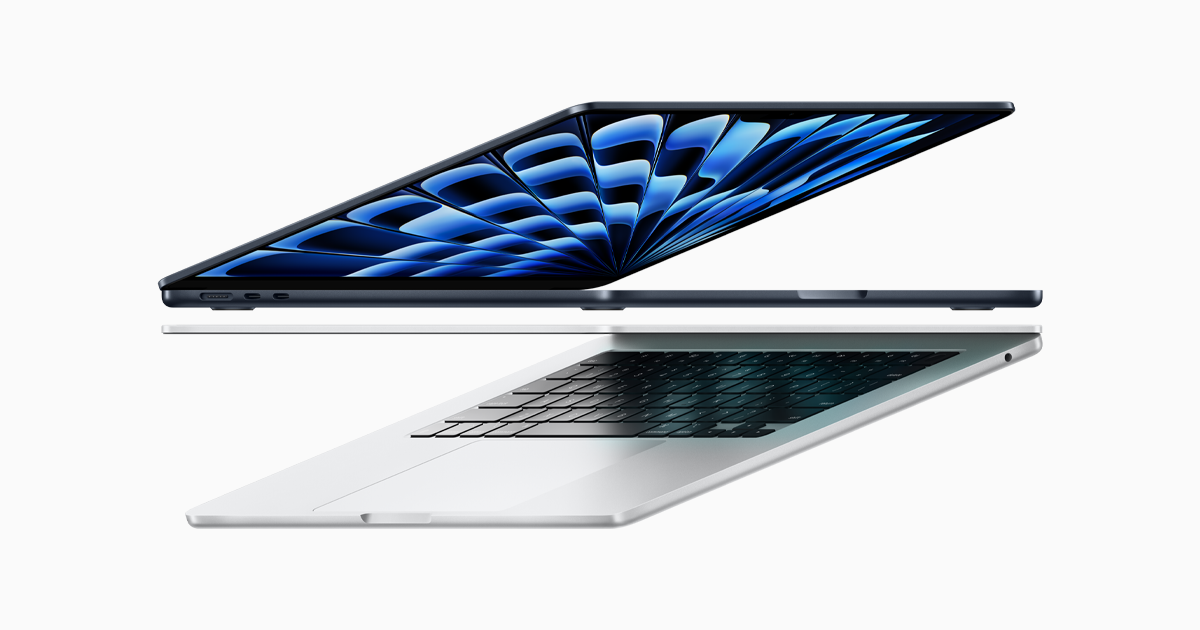The tech world is abuzz with the latest leaks surrounding Apple’s upcoming M4 MacBook Air, and the early benchmarks suggest a major leap in performance that could redefine the ultraportable laptop category. With its 10-core M4 chip and iPad Pro-level GPU capabilities, the M4 MacBook Air is shaping up to be Apple’s most powerful Air yet, promising to bridge the gap between casual portability and professional-grade performance.
Unveiling the M4: A Performance Giant in a Slim Frame
Early Geekbench 6 results have revealed that the M4 MacBook Air delivers a single-core score of 3,864 and a multi-core score of 15,288, marking a 26.7% increase in single-core and a 30.6% boost in multi-core performance compared to the M3 MacBook Air. This positions the M4 Air not just as a modest update but as a serious competitor in the lightweight laptop space, inching closer to the performance typically reserved for Apple’s Pro lineup.
These numbers also put the M4 Air ahead of many competing ultraportables running Intel’s 13th Gen and AMD’s Ryzen 7000 series processors, especially in single-core tasks, where Apple Silicon continues to excel. If these leaks hold true upon release, the M4 Air might even outpace the base models of the current MacBook Pro 14″ in certain benchmarks.

GPU Power: iPad Pro Graphics in a MacBook Air?
One of the most intriguing aspects of the M4 chip is its enhanced GPU performance, rumored to rival that of the M4 iPad Pro. Early benchmarks hint at a GPU architecture built on Apple’s latest technologies, supporting hardware-accelerated ray tracing and mesh shading, features previously limited to higher-end Macs.
However, it’s worth noting that some of the leaked benchmark results may not fully showcase the GPU’s capabilities due to tests running on outdated APIs like OpenCL. Apple has been pushing developers to adopt its Metal API, which is better optimized for Apple Silicon and could unlock even more graphical prowess in real-world applications, especially for tasks like video editing, 3D modeling, and gaming.
Design Evolution: Keeping It Sleek, Boosting the Power
While Apple seems to be sticking to its signature minimalist design with the M4 MacBook Air—thin bezels, fanless cooling, and a lightweight aluminum chassis—the real revolution is happening under the hood. The M4 chip is expected to bring better thermal efficiency, allowing for sustained performance without the need for active cooling, a significant advantage over many Windows-based ultrabooks that struggle with thermal throttling.
Additionally, sources suggest improvements in battery life, potentially pushing the M4 Air past the already impressive 18-hour mark seen in previous models, thanks to a more energy-efficient 3nm architecture.
How Does It Stack Against the Competition?
With these performance bumps, the M4 MacBook Air is positioning itself as a strong contender against Windows-based rivals like the Dell XPS 13 Plus and HP Spectre x360, both known for their high-end builds and performance. However, Apple’s optimized silicon and ecosystem integration give it a unique edge, especially for users already embedded in the macOS environment.
For creative professionals, students, and anyone seeking a balance of power and portability, the M4 MacBook Air could become the go-to choice—offering nearly MacBook Pro-level performance without the bulk or higher price tag.
What to Expect Moving Forward
While these leaked benchmarks paint an exciting picture, it’s essential to approach them with cautious optimism. Real-world performance can vary, especially as developers optimize their apps for the new hardware. However, if Apple’s track record with previous silicon upgrades is any indication, the M4 MacBook Air is set to be a game-changer in the ultraportable market.
As we await Apple’s official announcement, one thing is clear: the M4 MacBook Air isn’t just an incremental update—it’s a statement that even the thinnest laptops can pack serious power. Stay tuned for more updates as the official release nears, and get ready to see how this new MacBook Air reshapes what users expect from lightweight laptops.
Key Takeaways
- The M4 MacBook Air may deliver iPad Pro-level graphics performance.
- It features a 10-core M4 chip, indicating a performance boost.
- Maintains Apple’s sleek design while aiming for high portability.
Technical Specifications and Performance
The M4 MacBook Air introduces significant upgrades in chip performance, graphics, and battery efficiency. Its processor features improvements over previous models, offering enhanced speed and capabilities. The advanced display supports superior graphics rendering, while the battery optimizes power consumption for extended use.
M4 Chip Evolution and Performance
The M4 chip in the MacBook Air builds upon the successes of the M3 line. It includes a multi-core CPU designed for higher efficiency and faster processing speeds. Compared to its predecessors like the M2, the M4 offers notable advancements in both single-core and multi-core performance. This is evident from improvements in benchmark tests such as Geekbench, which highlight increased speed and efficiency.
The processor integrates a higher number of transistors, providing a boost in computational power. Users benefit from improved multitasking capabilities and smoother application performance. Furthermore, Apple Silicon technology enhances the overall functioning of the chip, contributing to the device’s improved processing power. Compatibility with advanced software applications makes the M4 a preferred choice for professionals needing reliable performance.
Graphics and Display Capabilities
The M4 MacBook Air comes equipped with a 10-core GPU, elevating its graphics capabilities. This chip enhances the ability to manage complex visual tasks, making it ideal for creative professionals who work with resource-intensive applications. Compared to the M3 Pro and M3 Max, the M4 MacBook Air shows marked improvements in rendering 3D models and video editing tasks.
The model features a display with a resolution that supports dynamic color range and better contrast. For those interested in visual fidelity, the display offers high pixel density and vibrant color representation, aligning closely with the standards found in iPad Pro models. This makes it appealing for tasks such as graphic design and video production.
Efficiency and Battery Life
Efficiency is a cornerstone of the M4 MacBook Air’s design, particularly in terms of battery life. The device includes power-saving features that optimize energy use, allowing for longer usage periods on a single charge. The improved architecture of the M4 chip reduces energy consumption without compromising performance.
This model offers impressive runtime, providing a dependable option for users needing extensive off-charge functionality. Enhanced thermal management keeps the device cool, which contributes to both performance efficiency and battery preservation. These improvements make it particularly advantageous for students and professionals who require prolonged battery life without sacrificing performance capabilities.
Design and Features
The M4 MacBook Air stands out with several design updates, an advanced user interface, and improved connectivity options. It aligns itself closely with the MacBook Pro and iPad Pro, both in aesthetics and technology, offering users a seamless experience.
Comparison with MacBook Pro and iPad Pro
The MacBook Air shares design similarities with both the MacBook Pro and iPad Pro, featuring a sleek and lightweight build. It maintains a balance between performance and portability, making it an excellent choice as a laptop replacement. The 13-inch display offers commendable brightness, similar to the iPad Pro, while the build quality matches that of the MacBook Pro. Both laptops feature an OLED display option, enhancing visual clarity and color production.
Design Enhancements and User Interface
The M4 MacBook Air introduces various design enhancements. It includes a Magic Keyboard that improves typing comfort and precision. Its trackpad is responsive, supporting multi-gesture commands. Aesthetically, the device features a refined finish and increased durability. Improved weight distribution makes it easy to carry, appealing to users who need mobility.
Connectivity and Ports
Connectivity for the MacBook Air includes several ports: Thunderbolt ports and a Magsafe 3 charging connector for fast and secure power. These ports support high-speed data transfer, making it easy to connect to external devices. Additionally, the user interface is backed by macOS, ensuring smooth operation across all tasks. Featuring AI-enhanced capabilities, the FaceTime camera supports SDR and HDR, enhancing video calls and meetings.







